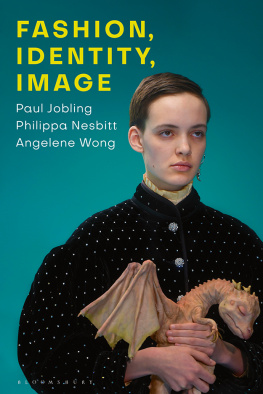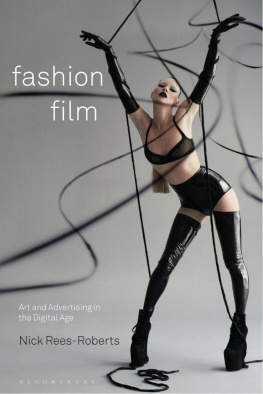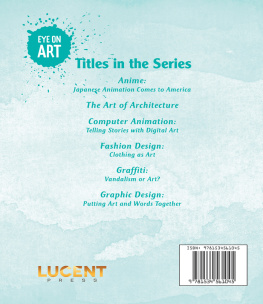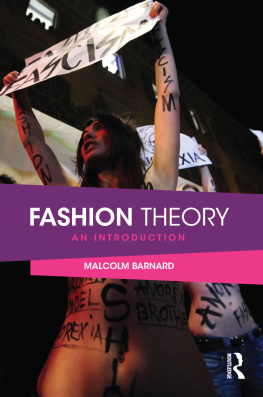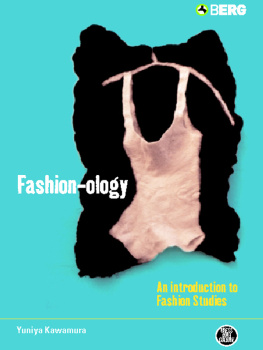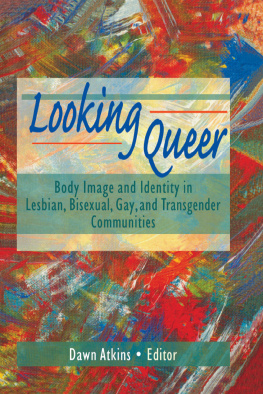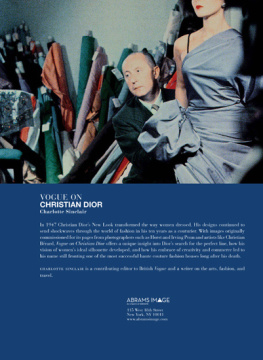Paul Jobling is the author of Fashion Spreads (Berg, 1999), Man Appeal (Berg, 2005) and Advertising Menswear (Bloomsbury, 2014). He was Visiting Professor between 2018 and 2020 for the MA Fashion Studies at The New School, Parsons Paris, France.
Philippa Nesbitt graduated from the MA Fashion Studies, The New School, Parsons Paris. Her MA thesis explores the emergence and impact of gender non-conformativity in global fashion modelling and media. She is currently digital curator for Revue magazine.
Angelene Wong graduated from the MA Fashion Studies, The New School, Parsons Paris. She is a doctoral student at School of Art, Design and Media at Nanyang Technological University, Singapore, and a dance artist. Her research deals with the intersections of fashion, dance, and performance.
FASHION, IDENTITY, IMAGE
Paul Jobling, Philippa Nesbitt and Angelene Wong

The inspiration for this book was a postgraduate seminar about identity politics and fashion, led by Paul Jobling when he was Visiting Professor at The New School, Parsons Paris in the autumn-winter semester, 201819. Without the stimulating crepuscular discussions that took place on Wednesday evenings at 45 Rue St Roch it would not have seen the light of day. We would like to thank, therefore, all the students who were involved in helping us to gestate, sharpen and refine our ideas: Olivia Johnston, Lily Li, Emma Shouse, Clara Smith, Ariel Stark, Abbygail May Talao, Katie Wilkes, and Melissa Zuleta Bandera, and Lisa Durand and Sarah Laurier from Sciences Po (The Paris Institute of Political Studies). A special word of thanks is due also to Florence Leclerc-Dickler, Dean of Parsons Paris, and Marco Pecorari, Associate Professor and Program Leader for the MA Fashion Studies, who facilitated the seminar in the first place, and to Karen Decter, Administrative Assistant at Parsons Paris, for her intellectual curiosity about the material as well as all the assistance in helping things run smoothly.
While the book was conceived in relatively calm times, its composition took place during one of the most turbulent periods for the health of the world with the advent of the Covid-19 pandemic in January 2020. On a personal basis, we owe a huge debt of gratitude to the following humans and non-humans for supporting us and helping to keep us sane as we were knocking the chapters into shape during such unsettling times: Max Ardencote, Lynne Bosetti, Marsha Meskimmon, Harrison Nesbitt, Annie Ng, Caitlin Prince, Joel Traptow, Ed Wilding and Lawrence Wong.
Likewise, we extend kind thanks to Andrea Giacobbe, David Newby and Magali Nougarde for the generous permission in allowing us to reproduce their work in for their unstinting willingness to share their experiences, and their continued openness and contributions to advancing the rights of non-binary fashion models: Oslo Grace, Alana Jessica, Meme Meng, Richie Moo, Ceval Omar and Rostok Smirnov.
More generally, one of the positive outcomes of the impact of Covid-19 has been the way that major fashion houses, including Dior and Gucci that we discuss in this book, realized the creation of so many different looks and the imperative to produce seasonal designs to display in major cities twice every year are wasteful material practices. All power, then, to them and this ethical and ecological vision of practice in the fashion industry. We dedicate this book to all like-minded souls that have an interest in fashion and want to enact positive change in the world.
Finally, we extend our appreciation to Georgia Kennedy and all the fashion and textiles editorial team at Bloomsbury for keeping faith in our project through thick and thin.
In his opening editorial for the AutumnWinter 2015 issue of Purple Magazine, Paul B. Preciado crystallized his own transitioning from female to male subjectivity and, indeed, how transfeminism at the start of the twenty-first century enjoins us all to consider the tactical role we can play in reforming societal norms:
There is a revolution taking place. Not only inside me, but all over the planet. This revolution did not happen in the glamorous and hippie 1960s. It will not take place in 1,000 years. This revolution is happening now, in front of you. You are in the middle of this revolution and, no matter if you know it or not, you are part of it.
Accordingly, the revolution that he asserts is unfolding has repercussions not just for those involved in gender reassignment but also to the wider project of identity politics across the spectrum. Originating with the radical social movements of the 1960s, identity politics seized the right to define oneself outside of official or expert categories; it thus seeks to give agency to subjects society has regarded as subordinate or inferior and to dismantle such binaries as masculine/feminine, straight/gay, black/white, young/old and human/nonhuman. The insistence in identity politics to be regarded as a distinct individual may sound at the outset like nothing more than a matter of solipsism and something that controversially coincides with the politics of postcapitalism or neoliberalism. As Stephen Metcalf (2017) describes it, the latter has become a rhetorical weapon, but it properly names the reigning ideology of our era one that venerates the logic of the market and strips away the things that make us human. Thus, neoliberalism exploits the idea that human beings can only attain a true sense of freedom or independence in the global economy of the free market through limitless acts of consumerism and digital communication, and not through any reliance on the welfare state: Neoliberalism represents a highly efficient, indeed, an intelligent system for exploiting freedom (Han 2017: 3).
And yet, the same economics of dehumanization have ushered in a renewed sense of both diversity and solidarity, which puts the emphasis on sentient inter-subjective and somatic experiences a phenomenon that has been chiefly manifested by the social activism of the #MeToo (f. 2006) and Black Lives Matter (f. 2013) movements against all forms of sexual harassment and racial discrimination. As Preciado posits, the challenge facing us all now lies in crossing boundaries: To move from feminism as identity politics to an extended politics of de-identification. To resist normative identifications instead of fighting to produce identity (Preciado 2015). In fact, as originally defined by black queer feminist Combahee River Collective in America in a statement of April 1977, the term identity politics is deliberately expansive and, entwined in a network of human relationships, its objective not only to focus on the forms of oppression endured by black women but also on the struggles all people at the margins of society face in trying to achieve recognition, if not equality: We believe that the most profound and potentially most radical politics come directly out of our own identity, as opposed to working to end somebody elses oppression To be recognized as human, levelly human, is enough (Combahee, 1977). But while identity politics has been a source of strength and empowerment for marginal and exploited groups, enabling them to interrogate their subordination to dominant social norms, it has simultaneously been criticized for overlooking the complex multidimensionality or intersectionality that human identities encompass.
It is black feminist lawyer Kimberl Crenshaw who is credited with coining the term intersectionality in an article in 1989 that highlighted how the American legal system failed to recognize that race and gender were simultaneous factors in cases of discrimination against black women. But in the 1970s, black feminists in the United States including the Combahee River Collective had already begun to probe why one-dimensional identity politics that dealt with the holy trinity of gender, class and race as single entities were inadequate: We also often find it difficult to separate race from class from sex oppression because in our lives they are most often experienced simultaneously (Combahee 1977). Hence, in a pamphlet first published in 1969, Frances Beal (2008) invoked the double jeopardy of being black and female to pinpoint how racism and sexism were combined in capitalist societies to subordinate black women by keeping them in low paid menial and stereotypical female work as nurses, nannies and domestic help. For some black feminists this notion of black jeopardy was, however, in turn regarded as an insufficient, if necessary, means of encompassing the different experiences of oppression that individual black women have had to endure over time. After all, as Silvia Federici (2021) states, colonization in the United States was built simultaneously on the slave trade and the witch-hunt, thus subjugating both female and black bodies in the spirit of American expansionism and progress.
Next page
